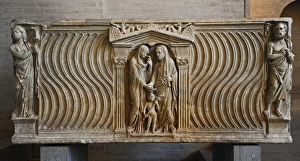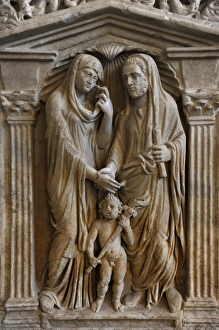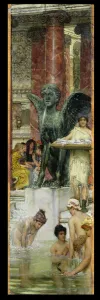Strigil Collection
The strigil, a tool used in ancient Rome for cleansing and grooming the body, holds a significant place in history
All Professionally Made to Order for Quick Shipping
The strigil, a tool used in ancient Rome for cleansing and grooming the body, holds a significant place in history. Its presence can be seen in various forms of art and artifacts from different periods. Dating back to around 240 AD, the Sarcophagus of a married couple showcases intricate carvings depicting scenes from Roman life. Among these depictions is an image of an athlete using a strigil to scrape sweat and dust off his body after physical exertion. This highlights the importance placed on cleanliness and personal hygiene during that time. Another notable representation of the they are be found in the Apoxyomenos statue, which is believed to be a copy of Lysippus' bronze masterpiece from around 320 BC. The marble sculpture captures an athlete holding the strigil as he prepares himself for competition or training. In addition to sculptures, paintings also feature this fascinating tool. Bernhard Strigel's Portrait of a Woman from ca. 1510-15 portrays a woman with delicate features holding what appears to be a small strigil-like object, possibly symbolizing her beauty regimen. Even earlier than these artworks are Etruscan bronze figures dating back centuries before Christ. These figures were discovered on the lid of a bronze vessel and depict individuals engaged in daily activities such as bathing or grooming themselves with strigils. The significance of the strigil extends beyond just visual representations; it was also featured in written accounts like The History of Nations plate showcasing Roman Baths. This aquatint print provides insight into how Romans utilized this tool within their communal bathing rituals. Lastly, we have Severan-era marble sarcophagi adorned with intricate relief carvings known as "strigilated" sarcophagi due to their decorative patterns resembling those created by using a strigil on wet clay or wax tablets.















